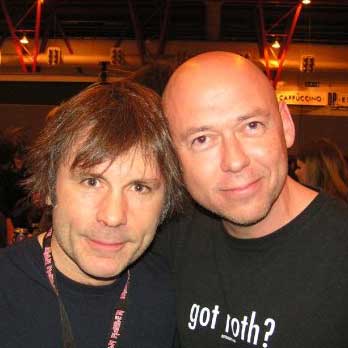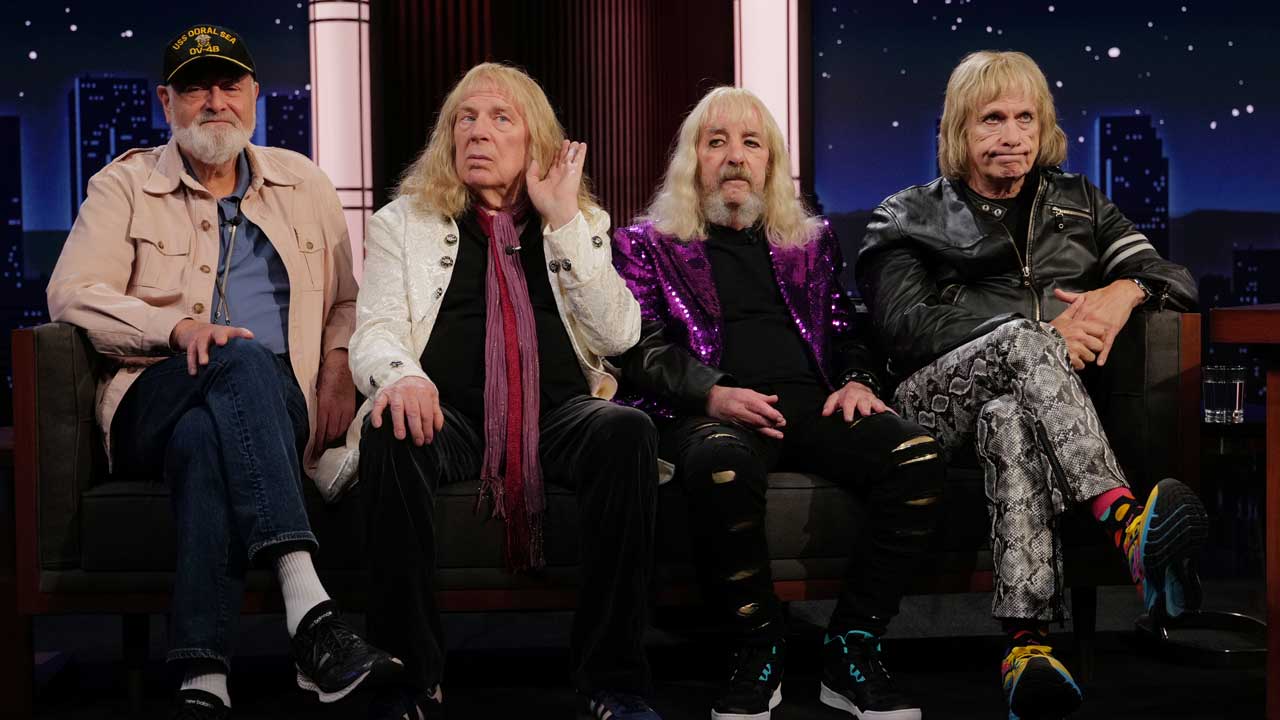How Sammy Hagar breathed triumphant new life into Van Halen
Van Halen lost a superstar singer when Dave Lee Roth quit the band, but new frontman Sammy Hagar and Foreigner's Mick Jones ensured the loss was short-lived
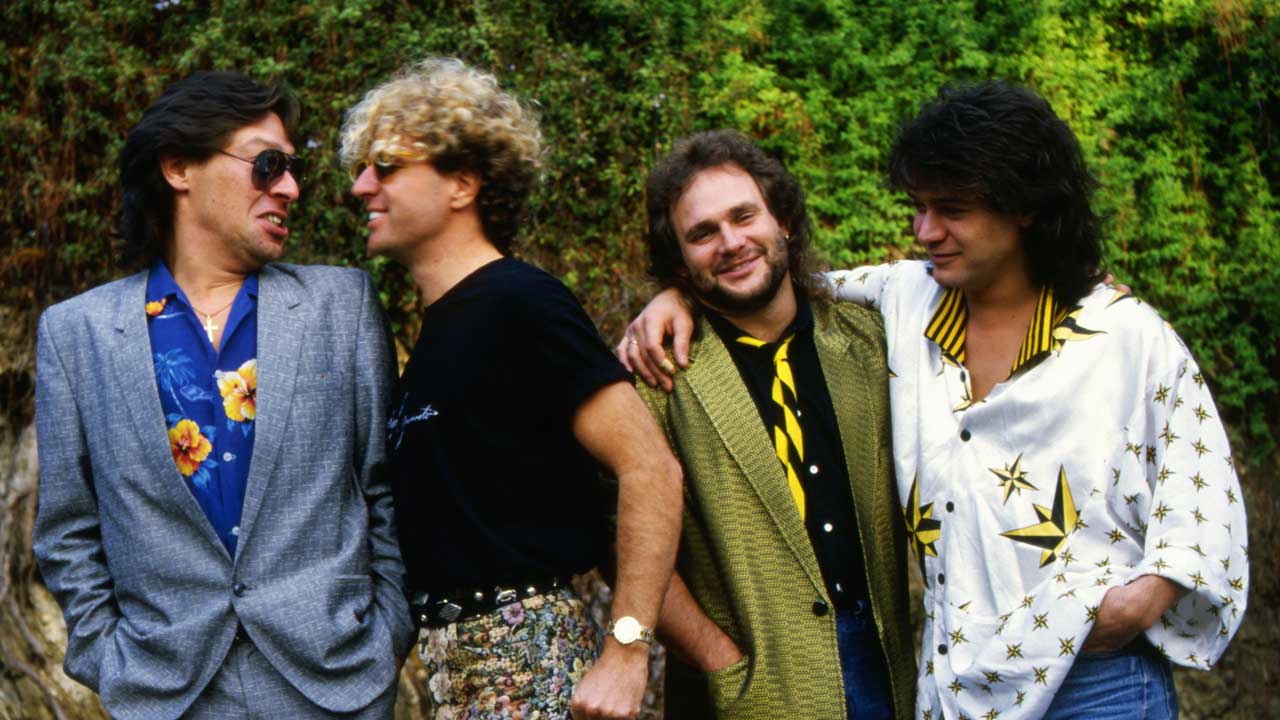
The announcement came on April Fool’s Day, but it was no joke.
America’s biggest rock’n’roll band had lost their superstar singer. Dave Lee Roth had quit Van Halen.
To everyone outside the band, it was shocking news. It was early 1985, and Van Halen were at the very top of their game. Two years earlier, they had headlined the US Festival in San Bernadino, California before an audience of 375,000 (and pocketed a reported $1 million for their troubles). The following year, their single Jump topped the US chart and its parent album, 1984, was well on its way to selling 10 million copies.
Eddie Van Halen was the most famous guitar player in the world, yet even he wasn’t the biggest star in his own band. That was Diamond Dave.
A fast-talking, high-kicking showman with a huge ego and a seemingly endless supply of comic one-liners, it was Roth’s outsized personality that made them super-famous. To fans and media alike, the band would be sunk without Dave Lee Roth.
There had always been conflict within Van Halen, and it reached critical mass months before Roth left. “The band had disintegrated into a spiteful bunch of bleary-eyed, argumentative, procrastinating individuals,” he later explained.
His exit had been carefully planned – the singer had been rehearsing in secret with a new band closely modelled on Van Halen, right down to virtuoso guitarist Steve Vai.
Sign up below to get the latest from Classic Rock, plus exclusive special offers, direct to your inbox!
Roth had already tested the water earlier at the start of 1985 with Crazy From The Heat, a four-track covers EP which reached Number 15 in the Billboard chart. In the race between Van Halen and their newly departed singer, the smart money was on Diamond Dave.

Sammy Hagar heard about Roth’s departure before it was made public. He’d been tipped the wink by long time Van Halen producer Ted Templeman, who had also worked on Hagar’s last album, VOA. But it would be an unlikely figure who played Cupid and helped save Van Halen’s career: the guy who fixed Hagar’s car.
“My car mechanic, Claudio Zampolli, was also Eddie’s mechanic,” Hagar says. “One day, when Eddie was picking up his car, he was telling Claudio that Dave quit – nobody knew, it wasn’t public knowledge. And that’s when Eddie saw my black Ferrari 512, the car I used in the video for I Can’t Drive 55. He said, ‘Wow, nice car, whose is it?’ Claudio said, ‘It’s Sammy Hagar’s car – you should call him and get him in the band.’”
Roth might have gotten a head start on his ex-bandmates, but the three people he’d left behind weren’t about to just roll over and die. Eddie Van Halen did eventually make that call, and in Sammy Hagar found a new singer with the charisma, the force of personality and the brass balls to replace Diamond Dave. Together, they would make a comeback album that defied expectations by shooting to Number One in the US. And with it, Van Halen won the war with Dave Lee Roth.
Sammy Hagar was always a cocky son of a bitch, and in 1985, at the age of 37, he had every right to be. The California native had first come to prominence in the early 70s as the singer for Montrose, the band who had a profound influence on American hard rock in general and Van Halen in particular.
After being fired from Montrose, Hagar forged a successful solo career that reached a pinnacle with 1984’s VOA and the single I Can’t Drive 55, an all-American protest song from a fast car enthusiast and the song that would indirectly play a part in him joining Van Halen.
Hagar had been around long enough to trust his gut. After he heard about his mechanic’s conversation with Eddie Van Halen, he had an idea of what was going to happen.
“I told my wife, ‘They’re gonna call me,’” he says. “And she goes, ‘God, I hope not!’ She hated that band! I said, ‘Who else are they gonna call?’ There’s only a few guys that can sing at that calibre. And there’s a certain chemistry you got to think of – Southern California guys. I kind of fit the image.”
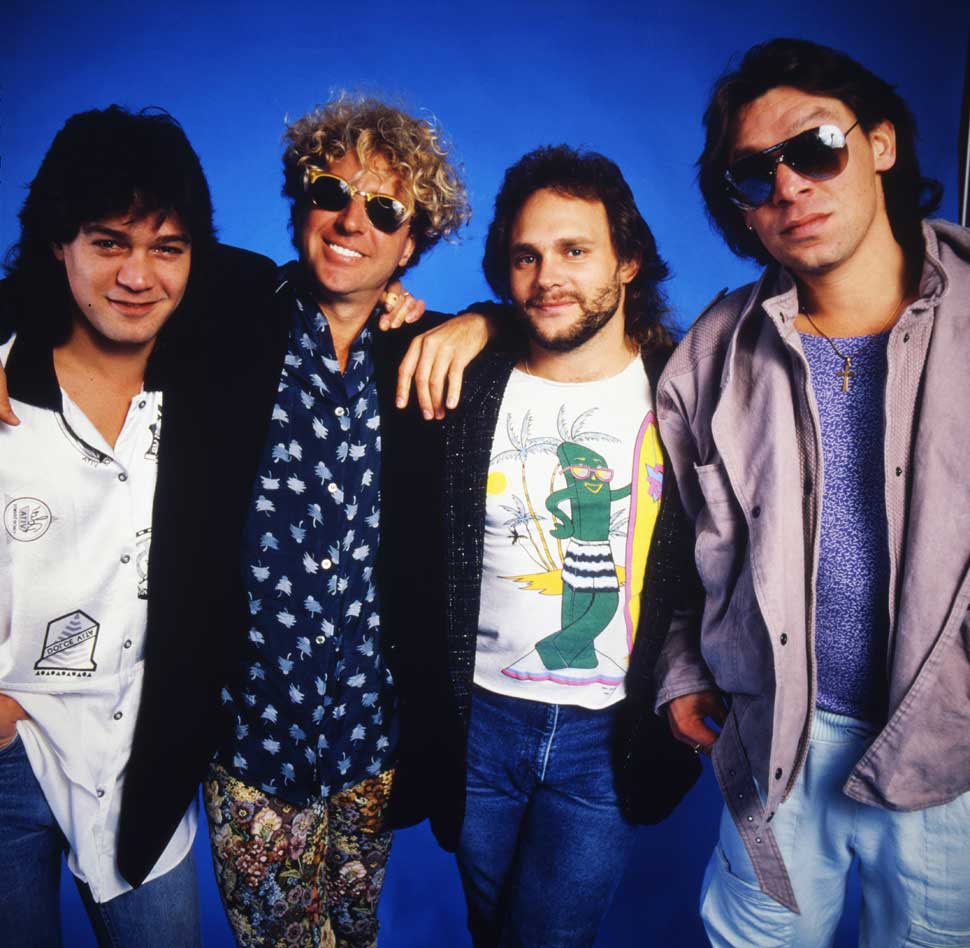
Unknown to Hagar, Van Halen had considered several other singers, among them Cold Chisel frontman Jimmy Barnes, future Mr Big vocalist Eric Martin and even a female singer, Patty Smyth. But Hagar was in a different league. Moreover, he knew and liked Eddie Van Halen
“I’d met Eddie twice at festivals,” he says. “He was a Montrose freak, and I thought he was the nicest guy in the world. He was very naïve, innocent, humble. He was like a kid.”
Hagar was sure Van Halen needed him. They were, in his words, “high and dry”. But he retained the mindset of a solo artist. “I’d come off three platinum albums,” he says. “I told Ted Templeman, ‘I’m gonna get Eddie to play on my record.’”
When the inevitable call came, that plan was quickly forgotten. “Eddie was insistent,” Hagar says. “He was like, ‘You gotta come tomorrow!’ I said, ‘I just got home from a tour. I ain’t gonna do nothing tomorrow.’” But within a few days, Hagar was at Eddie’s home in LA’s Coldwater Canyon.

The house was modest, described by Hagar as “a two-bedroom county-style place, small – not a badass house whatsoever”. In an adjacent garage was Eddie’s recording studio, 5150. Named after the Californian police term for a mentally disturbed person, it had been designed by Donn Landee, the engineer who had assisted Templeman on every Van Halen album, and also the two albums Hagar recorded with Montrose.
In the weeks prior to Hagar’s arrival, the band – Eddie and his brother, drummer Alex Van Halen, plus bassist Michael Anthony – had begun work on some new songs, recorded by Landee. Hagar admits he was a little nervous on the day.
“It wasn’t like I was auditioning,” he says, “but if you walk in and start singing with a band, you can feel pretty fucking uncomfortable.”
Eddie walked him into the studio to meet the other guys. Also present were Donn Landee and the brothers’ jazz-musician dad, Jan Van Halen. Hagar noticed that the band were frazzled from a lack of sleep. “They’d been up all night,” he says. “I was impressed with the work ethic. But I was thinking, these guys are fuckin’ crazy…”
He was also astonished at the conditions inside the studio. “It was a mess,” he laughs. “There must have been 300 beer bottles and cans laying around. Half of them had beer in them and old cigarettes. Every ashtray was overflowing with cigarette butts. There were butts left burnt on the floor. That place stunk like a fucking bar that hadn’t been cleaned for a hundred years. Eddie’s guitars were everywhere – maybe 30 guitars, laying against walls, on the floor, just knocked over.”
First, they talked. They knew Sammy could sing. What they needed was a sense of whether he would fit the band as a personality. The last thing they wanted was another Roth. As the talk turned to business, Hagar was struck by their naïveté.
“I asked these questions,” he says. “Like, ‘How much did you net on the last tour?’ I realised I was making three times more money than any one of those guys. They’d been spending most of it, splitting it four ways. I’m thinking, ‘Do I really wanna be in a band like this and take a pay cut?’”
As soon as they started jamming, everything changed. The band played a grooving, mid-tempo riff and Hagar jumped on it. “I started singing to it, making up words,” he recalls. “And right off the bat I sang, ‘Summer nights and my radio…’ They all got excited. ‘Oh man, this guy can sing!’ And Jan was diggin’ that I could scat like a jazz singer.”
The jam session lasted from noon ’til midnight, without a break. They went through all the song ideas the band had, including the punchy riff that would form the basis for the track Good Enough. Donn Landee got it all down on tape. The following day, after Hagar had gone back to his home in Mill Valley, California, he listened again to what they had recorded.
It sounded good – so good that Hagar made his decision there and then. He called Eddie and told him: “I wanna do it.” Eddie was ecstatic. Then Hagar called his manager, Ed Leffler: “I’m doing it.” Leffler’s first reaction was disbelief: “You’re fucking crazy.” After a moment’s thought, he added: “Let me talk to David Geffen…”
For Hagar to join Van Halen, an agreement would have to be negotiated between his label, Geffen Records, and the band’s own label, Warner Bros. Hagar knew this would not come easily – he was Geffen’s biggest artist, and owner David Geffen was not just going to let him go. But Hagar was not inclined to wait. He celebrated with his new bandmates at a Mexican restaurant in Hollywood. “We ate tacos and drank margaritas and laughed all night,” he recalls.
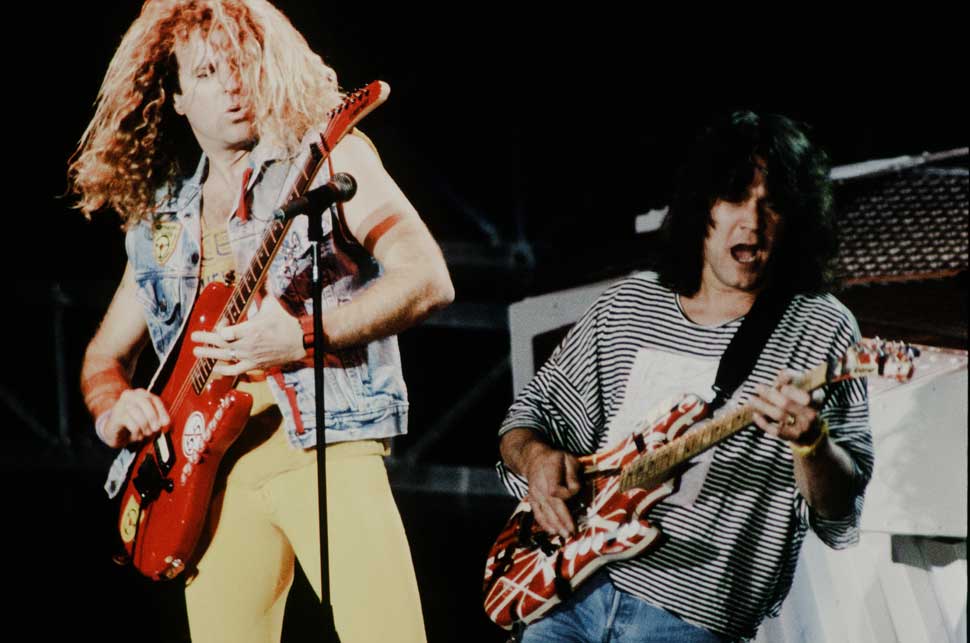
And a period of intensive rehearsals began as Hagar moved into a rented house in LA. They had five new songs written and partly recorded before Geffen shook hands on a deal with Warners president Mo Ostin. “Sammy, you have no fucking idea what you cost me,” Ostin later told the singer, though the mogul knew it was a price worth paying after he heard the song that would become Van Halen’s comeback single.
The band had already recorded a demo of Why Can’t This Be Love, but when Ostin visited 5150 they chose to perform the track live off the studio floor, with Eddie playing keyboards and Hagar on guitar. “That freaked him out to begin with,” Hagar says. “But when we finished playing it, Mo had the biggest grin on his face. He put his finger in the air and said, ‘I smell money!’”
And from this defining moment, another important decision was reached. Such was the stature of Dave Lee Roth that one Warners exec, in all seriousness, suggested that the band be renamed ‘Van Hagar’. According to Hagar, this idea was considered for one day.
“At first I was flattered,” he admits. “But then I thought, fuck that – this is Van Halen! I’m joining them. We’re not starting another band.” More importantly, Hagar had total self-belief. In his mind, he was better qualified than Roth to be the singer in Van Halen.
“I was a fan of the band,” he says, “but Roth always bugged me. He was fake and contrived. If anything, Dave had been mimicking me. He started wearing bandanas after I did. He started drinking Jack Daniel’s on stage after I did. I didn’t have enough respect for him to fear that job.”
As Van Halen continued working on the new album at 5150, there was one notable absentee. For the first time in the band’s career, they were making an album without producer Ted Templeman. Worse, Templeman was producing Roth’s first full-length solo record. Van Halen viewed this as an act of betrayal.
“We were the anti-Roth camp,” Hagar says. “He was the enemy of all enemies. Not to me – I didn’t even know the fucker. But I’m a team player, and he’s the enemy, right? So Ted Templeman was too.”
By default, Donn Landee assumed the role of producer. Hagar had doubts about this, but the others were happy enough. The music was flowing out of them, and for Eddie, the band’s primary songwriter, working with Hagar was a revelation.
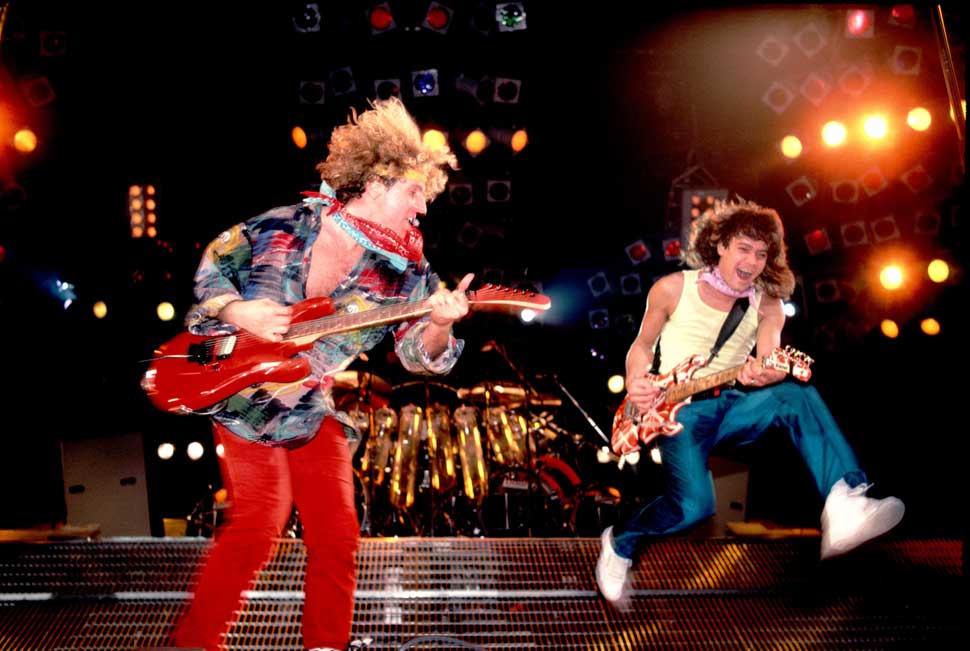
“From the first second, Sammy could do anything I threw at him,” Eddie told Rolling Stone. “It just opened up a whole new door. Finally, we felt like we were four people with a common vision. All of a sudden everything felt complete.”
Synth-heavy ballad Love Walks In was the best example of how Eddie’s writing was developing. It wasn’t the first Van Halen song based around synthesisers, nor was it their first ballad. But it had something new: a deep emotional quality.
“The first time Eddie played me that song, late one night, I got goose-bumps,” Hagar says. “It was so beautiful. I wrote the lyrics on the spot, and I sang it live with a hand-held mic. If you listen closely, it ain’t the best vocal sound in the world, but the performance is slammin’.”
More typical of Van Halen was the hard-rock anthem Best Of Both Worlds. “It’s such a funky song,” he says. “That’s R&B played full volume.” There was also a goofy throwaway track, Inside, on which the new Van Halen made jokes at the expense of their former singer. If they sounded drunk on that track, it was, according to Hagar, a fairly accurate representation of the way these guys operated.
“I wasn’t a big drinker,” he says, “but the whole time we were making that record, everybody had a beer, constantly, except me. Ed would say, ‘I gotta take a piss.’ He’d come back with two beers – one for him and one for Al. And Al would do the same, only sometimes he’d bring two or three beers for himself and one for Ed. Ed would drink all day and night. I just wished I could play that great sober.”
Hagar could tolerate the drinking. What he couldn’t do was let the band finish the album without the aid of a recognised producer. It was too important for that.
“I felt that Donn Landee was just an engineer,” Hagar says. “And Ed wasn’t a strong leader who would produce a record. So I said, ‘We need a producer. How about Mick Jones?’ The guys said, ‘Sure.’ We were a very diplomatic band.”
Mick Jones, the guitarist and founding member of Foreigner, had known Hagar since the 70s, when Montrose had toured with Jones’ former band, Spooky Tooth. He had co-produced many of Foreigner’s biggest albums, including the multi-platinum 4. “I thought Mick was a great songwriter, and would help us hone our songs,” says Hagar.
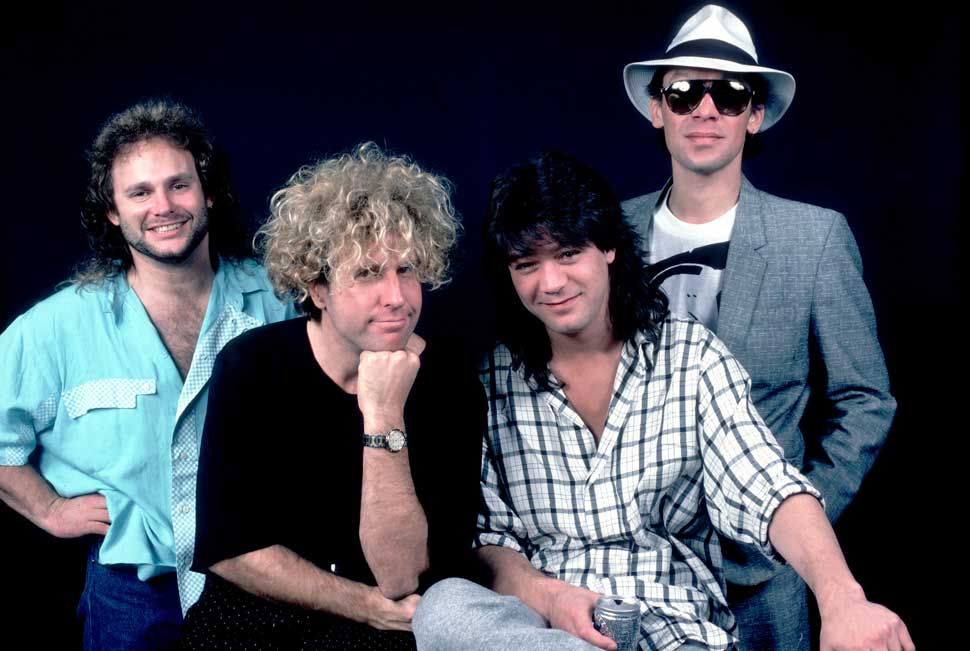
Jones was in LA when Hagar contacted him. Immediately, he agreed to go up to 5150 to hear some music and talk with the band.
“Sammy picked me up,” Jones says today, “and as we were driving up to the studio I said, ‘What should I expect up there?’ He said, ‘Mick, you and I have been around awhile. But let me tell you, this is something else. Hold tight and enjoy the ride!’”
The first track the band played for Jones was frenetic heavy-metal blow out Get Up. That was all it took for him to sign up as producer. “I’ve never heard anything like that I my life,” he told them. “It sounds like four guys fighting inside the speaker cabinets, beating the shit out of each other. I’m in.”
Hagar’s instinct was right. A proven hitmaker, Jones bought his wisdom to bear on Van Halen’s new songs. He helped turn Why Can’t This Be Love from a lengthy jam into a bona fide hit-in-waiting. He encouraged the band to develop an Eddie Van Halen keyboard riff into the barrelling Dreams, coaxing out one of Hagar’s greatest ever vocal performances in the process. “I was able to push Sammy to new heights,” says Jones. “Literally. He was singing so high that he was hyperventilating. He almost passed out.”
Jones took a different approach with Eddie, just letting him do his thing. “There’s not much I could have done to improve Eddie’s performances,” he says. “He was completely out there – not drug-wise, he just went into this trance state as he played.”
In these moments, Jones was reminded of the times he spent with Jimi Hendrix in the late 60s, when Jones was the guitarist for French superstar Johnny Hallyday and Hendrix was the opening act on a European tour. “When I worked with Eddie, it was the first time I’d met a guitar player who had a similar gift, who had that thing running through him from up above,” he says.
As work on the Van Halen album neared completion in December 1985, there was a buzz in the air at 5150. “We all felt,” Hagar says, “that the music we were making was on such a high level, we just didn’t feel like anyone could touch that. There was a quote that was said maybe five times a day: ‘Wait ’til the fans hear this shit.’ We knew.”
But there was one person who wasn’t smiling. From the first day that Mick Jones arrived at 5150, he had sensed animosity from Donn Landee. “Donn had expected he would produce the album,” Jones says. “So there was an atmosphere of resentment between him and me.”
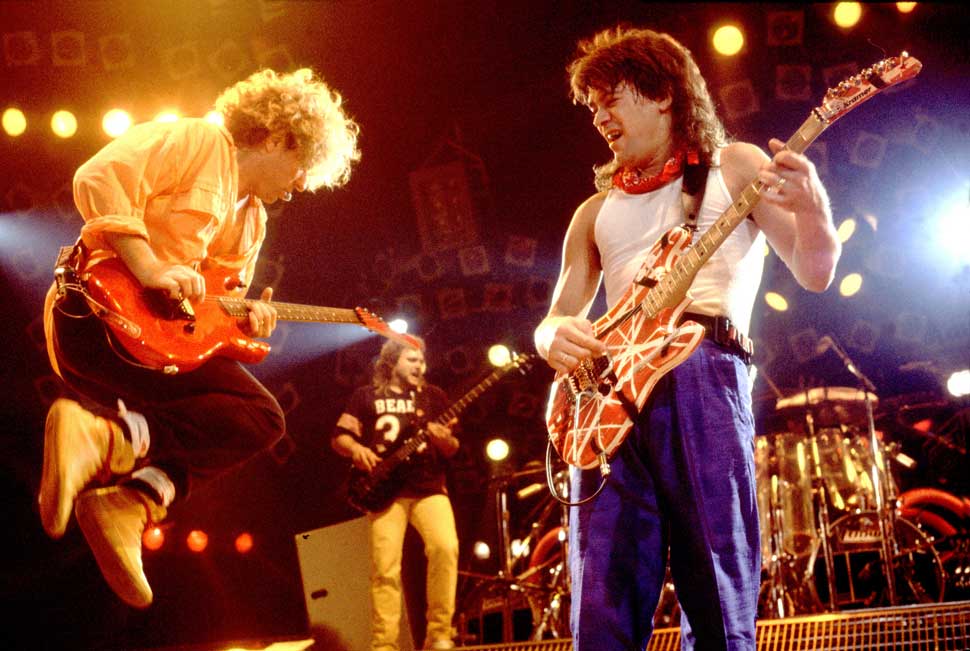
Jones handled this with quintessential British reserve. Until, that is, Landee flipped.
“Donn had a bad moment,” says Jones. “He locked himself in the studio and threatened to burn the tapes. It was a stand-off for almost a day – like one of those situations where somebody’s going to commit suicide. He was very highly strung. But in the end, we talked him down.”
Surprisingly, there were no repercussions for Landee. He cleared the air with Jones, and together they completed the final mix of the album in January 1986. “We had to work fast,” Jones says. “The band had a tour booked.”
On a sunny LA day in February, Mick Jones was driving in a convertible sports car, the top down, the radio tuned to a rock station, when a DJ announced in an excited voice: “Here’s something brand new from Van Halen!” He played Best Of Both Worlds. Jones cranked up the volume. “It sounded amazing,” he says. He was certain that Van Halen had nailed it.
In early March came the first single. Why Can’t This Be Love was an instant hit, rising to Number Two on the US chart. 5150 itself was released on March 24. It was an out-of the-box success. “The album went platinum in one week,” Hagar says. “It was the fastest million-selling record in Warners’ history.”
The reconfigured Van Halen kicked off their first tour on March 27 in Shreveport, Louisiana. The first song they played was Hagar’s 1982 solo hit, There’s Only One Way To Rock. Coming from Van Halen, it was a powerful statement of unity.

A few weeks later, before a show in Atlanta, Georgia, the four members of Van Halen were summoned to their manager’s hotel suite for a meeting. Champagne was poured, and the band were told the record was at Number One.
“We fuckin’ partied!” Hagar says. “It was such a high. None of us had ever had a number one.”
There were attempts to spoil the party by a small number of old-school Van Halen fans loyal to Roth. At several shows, banners were held up: ‘FUCK HAGAR, WHERE’S DAVE?’ ‘SAMMY SUCKS! WE WANT ROTH!’ Hagar claims that Roth had a hand in this. “Dave would pay for these guys’ tickets,” he says. “But the truth is, we didn’t give a fuck. We were selling records faster than they could print them and we were selling out every show. We felt invincible.”
In July, Roth’s album Eat ’Em And Smile was released. It peaked at Number Four on the US chart. Hagar insists that Roth’s failure to match Van Halen’s Number One was not the cue for another celebration. “We didn’t care about him,” he says. “We were so absorbed in our own success.” But the numbers would tell the story. Roth’s album sold one million to Van Halen’s five million. The enemy had been defeated.
When Sammy Hagar reflects on what he calls “my crazy ride with Van Halen”, he has mixed emotions, but Hagar is not a man who holds grudges. “The bad shit doesn’t carry with me,” he says. “As bad as it was at the end of my time with that band, I’m not mad at anyone. I have no resentments, no regrets.”
And as Hagar says, that music was never better than on 5150. “It was a mind-blower. To have the success that we had with that record – a second run for the band – it was kind of a miracle in rock’n’roll. The fans could have rejected it, but they bought into our trip. I would say that record was the highlight of my musical career. And the power in those songs – you can still feel it.”
This article originally appeared in Classic Rock 194, in March 2014.
Freelance writer for Classic Rock since 2005, Paul Elliott has worked for leading music titles since 1985, including Sounds, Kerrang!, MOJO and Q. He is the author of several books including the first biography of Guns N’ Roses and the autobiography of bodyguard-to-the-stars Danny Francis. He has written liner notes for classic album reissues by artists such as Def Leppard, Thin Lizzy and Kiss, and currently works as content editor for Total Guitar. He lives in Bath - of which David Coverdale recently said: “How very Roman of you!”
